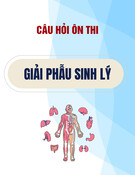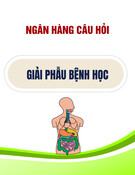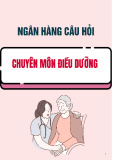
JOURNAL OF 108 - CLINICAL MEDICINE AND PHARMACY Vol. 19 - Dec./2024 DOI: https://doi.org/10.52389/ydls.v19ita.2512
67
Case report: Early detection of vertebral artery dissection
Dinh Thi Hai Ha*, Nguyen Van Tuyen, Le Duy Dung,
Nguyen Thi Cuc, Nguyen Thi Loan and Vu Thi Le
108 Military Central Hopistal
Summary
Vertebral artery dissection (VAD) is a rare cause of ischemic stroke in young patients. The largely
nonspecific symptoms and delayed presentation pose a serious diagnostic challenge. Patients with VAD
usually describe a trivial minor neck trauma preceding the event. Such traumas may be associated with
spinal manipulation or sudden movements of the neck. We present an unusual case of vertebral artery
dissection in a 27-year-old female patient following an episode of neck massage. She developed
dizziness and headache, nausea, and imbalance following the procedure. After investigations, the
patient was diagnosed with VAD, and treatment was initiated. She was discharged in stable condition.
This case suggests that careful history taking and awareness of the symptoms of VAD are necessary to
diagnose this entity as timely diagnosis and treatment can prevent permanent disability or even death.
Keywords: Stroke, neck massage, vertebral artery dissection.
I. BACKGROUND
Vertebral artery dissections (VADs) can be
described as either spontaneous or traumatic.
Traumatic dissection may be caused by penetrating
or blunt force, including excessive flexion or
extension of the neck. Chiropractic manipulation is a
well-documented precipitating factor. Many
conditions have been identified in association with
spontaneous dissection. Although rare event, they
are one of the most recognised causes of stroke in
those aged under 45 years. Injury to the vertebral
artery can lead to potentially fatal posterior
circulation ischaemia. In this report we describe a
case of VAD in a young woman after neck massage.
She was treated with aspirin and discharged with no
residual neurological deficits.
II. CASE PRESENTATION
A 27-year-old female patient with no significant
past medical history presented to the Emergency
Department with a two-days history of progressively
Received: 28 September 2023, Accepted: 26 December 2023
*Corresponding author: dinhhaiha108@gmail.com -
108 Military Central Hopistal
worsening dizziness and headache, nausea. It was
sudden onset following a head and neck massage.
The salon employee massaged the patient’s neck till
she heard a crack in her neck. Instead of being
alarmed, she thought it was an indication of a
“successful” massage. When she started to walk back
home, she realized something was wrong. She felt
uneasy, dizzy and could not walk steadily. When she
symptoms started increasing, she attended the
Emergency Department.
When we examined the patient, she was alert.
Vital signs were all within normal limits. Her
temperature was 36.5 degrees celsius; heart rate was
72 beats per minute; blood pressure was
118/78mmHg; and respiratory rate was 20 breaths
per minute. On examination, she demonstrated full
range of motion of the neck without pain. She had
no audible carotid bruit, no notable swelling,
ecchymosis, or midline cervical spinal tenderness to
palpation. On a detailed neurologic examination,
she had a Glasgow Coma Scale of 15 and was alert
and oriented to person, place, and time. She had a
normal cranial nerve exam, full strength in the upper
and lower extremities, normal reflexes, sensory
examination was unremarkable. She had a negative






































